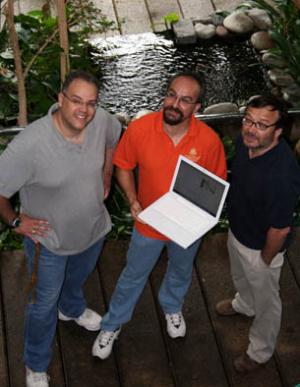 Research in the University of Alberta' + char(39)+ N's Faculty of Science may soon be able to answer that question. The departments of computing science and earth and atmospheric science have been working together to create a Wireless Sensor Network that allows for the clandestine data collection of environmental factors in remote locations and its monitoring from anywhere in the world where the Internet is available.
Research in the University of Alberta' + char(39)+ N's Faculty of Science may soon be able to answer that question. The departments of computing science and earth and atmospheric science have been working together to create a Wireless Sensor Network that allows for the clandestine data collection of environmental factors in remote locations and its monitoring from anywhere in the world where the Internet is available.
Research in the University of Alberta' + char(39)+ N's Faculty of Science may soon be able to answer that question. The departments of computing science and earth and atmospheric science have been working together to create a Wireless Sensor Network that allows for the clandestine data collection of environmental factors in remote locations and its monitoring from anywhere in the world where the Internet is available.
The research team, including Pawel Gburzynski, Mario Nascimento, and Arturo Sanchez-Azofeifa, recently launched EcoNet, a functional model of a WSN for environmental monitoring in the display house in the University of Alberta' + char(39)+ N's Agriculture/Forestry Centre. The display house hosts a small but feature-rich environment that mimics that of a tropical forest. Using a WSN, a number of sensors can continuously monitor factors like temperature and luminosity and will process, store and transmit data co-operatively and wirelessly with other sensors to generate data that can then be collected and made available to users virtually anywhere on the globe. The sensors represent a technology for researchers to monitor diverse phenomena continuously and inconspicuously.
Having the data continuously monitored by researchers substantially increases the chances of uncovering anomalies early enough to investigate them promptly and thoroughly.
The overall framework of WSN can also be extended for use in other closely related scenarios such as monitoring potentially dangerous situations like hazardous waste disposal, or hard-to-witness phenomena such as ice cap movements in the Arctic.
The opportunities these sensors will provide to scientists are paramount in a global environment that is changing at an ever-increasing pace.
Once the display-house prototype is tested and customized, at least two sites are to be fully deployed in the fall, one likely in the Brazilian rainforest, and the other in a forest in Panama.
The project has been made possible by close collaboration with Olsonet Communications Corporation in Ottawa, which has implemented the WSN nodes and supported the project since its inception. Support of this project has also been provided by the University of Alberta, U of A' + char(39)+ N's Centre of Earth Observation Sciences and National Science Engineering Research Council.

 Previous page
Previous page Back to top
Back to top







